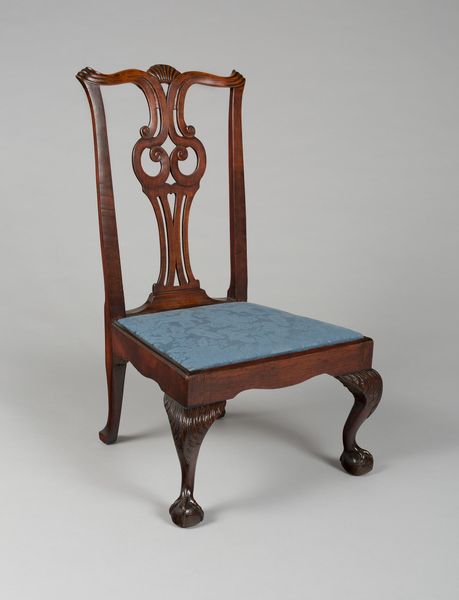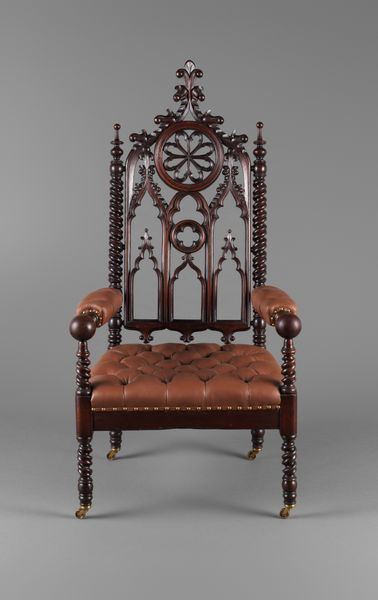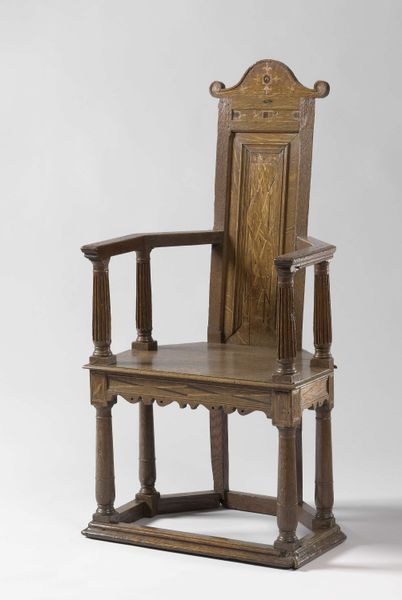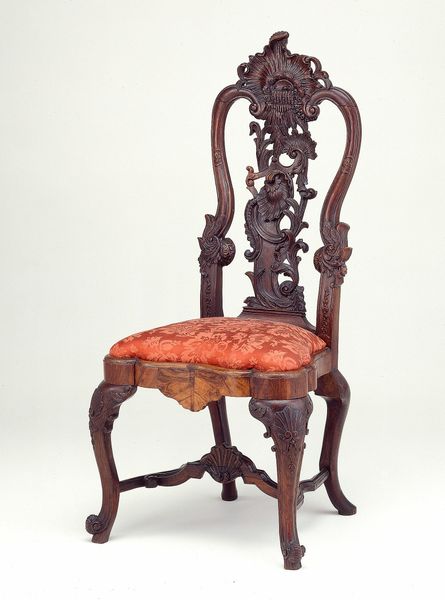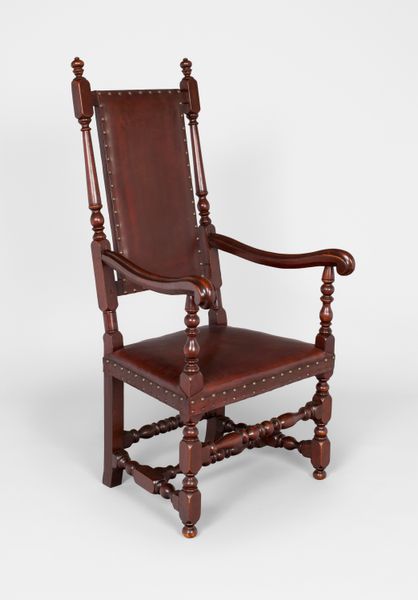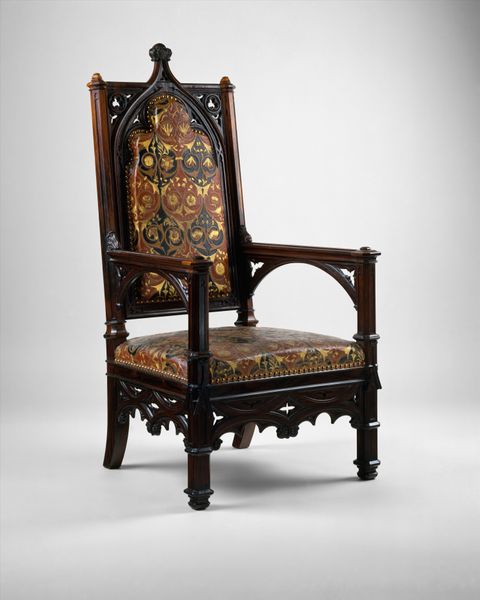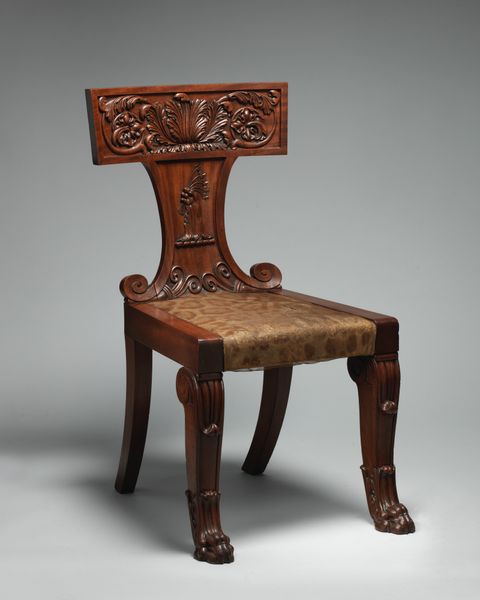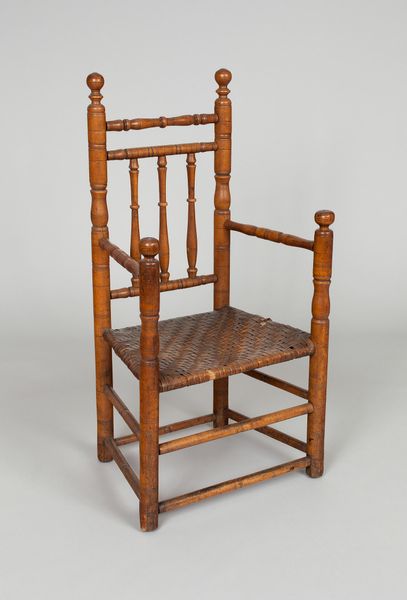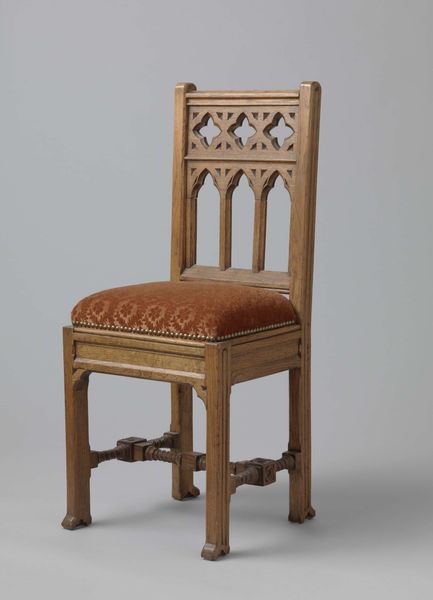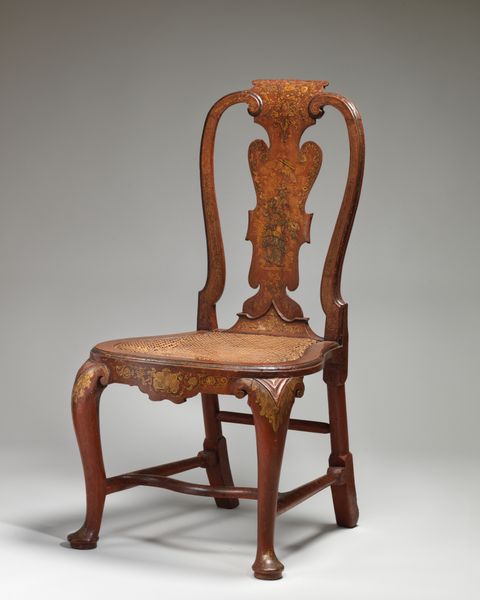
Dimensions: 157.5 × 66.7 × 56.2 cm (62 × 26 1/4 × 22 1/8 (seat) in.); Overall d. 62.2 cm (24 1/2 in.)
Copyright: Public Domain
Curator: Here we have an armchair, likely crafted sometime between 1840 and 1860, and now residing here at The Art Institute of Chicago. It seems to draw inspiration from several movements and is rendered in carved wood. Editor: It’s striking how upright it is! The verticality is so pronounced, enhanced by those spiraling columns on either side, making the seat itself seem almost secondary to the elaborate back. Curator: Absolutely. When considering its design, the piece integrates both Medieval and Gothic elements, fitting within a broader revivalist trend in decorative arts that engaged with historical styles and aesthetics. There is an Arts and Crafts spirit here too, given its obvious handcrafted quality. Editor: You can certainly see that emphasis on craftsmanship, but do you think it transcends mere revivalism? The design is so ornate; each little detail—the quatrefoils, the finials—is meticulously rendered. Curator: The piece definitely functions within a social framework. It reflects the Victorian era’s fascination with status and its understanding of design’s historical narrative. It presents as a sort of quasi-ecclesiastical throne. Can you imagine the type of person who would use it, and for what purposes? What space would this piece typically occupy? Editor: Yes, this is far more than utilitarian! Semiotically, those architectural motifs borrow so heavily from Gothic cathedrals, lending this simple chair a distinctly elevated, maybe even spiritual, character. The circular tracery looks to me like an echo of rose windows, distilling the essence of those complex forms. Curator: Precisely. We need to consider the role such pieces played in reinforcing class distinctions, creating an aura of importance. The labour put into it versus how accessible something of this quality would be highlights key power imbalances of the time, no? Editor: In a way, it reminds me of how art and architecture themselves can function as social texts, embodying ideologies of power, as Foucault outlined in his writing on the panopticon. While a chair isn’t exactly the same as a prison design, this artwork definitely shares the same architectural DNA, projecting themes of power, discipline, and even surveillance into a domestic context. Curator: Indeed. When considering the historical moment in which this armchair was produced, as well as how those who created such a striking piece might have engaged in political and artistic discourse surrounding identity, it adds another dimension to how we, today, experience such a distinctive creation. Editor: Thinking about this piece and its elements of design and construction through the lens of formalism has made its intrinsic nature so much more rewarding. Curator: Exploring the intersections of class, craft, and design through an armchair – quite the conversation!
Comments
No comments
Be the first to comment and join the conversation on the ultimate creative platform.
